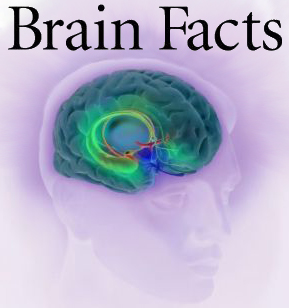
Facts to Demystify the Brain (most points courtesy of Dave Touretzky and Christopher Cherniak):
- The brain is the most complex system known to date.

- A few spoonfuls of yogurt contain 1011 lactobacillus bacteria: ten times the number of cortical neurons in a human brain
- Average number of glial cells in brain = 10-50 times the number of neurons [source]
-
 There
are roughly 1013 synapses in cortex. Assume each stores one bit
of information: that’s 1.25 terabytes.
There
are roughly 1013 synapses in cortex. Assume each stores one bit
of information: that’s 1.25 terabytes.
- To put this in perspective, this 2.0 terabyte hard drive is readily available and costs less than $900.
- Also, the Library of Congress (80 million volumes,
average 300 typed pages each) contains about 48 terabytes of data.
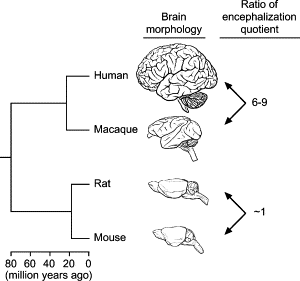
- Volume of the human brain: about 1.4 liters.

- Number of neurons in a human brain: 1012. Number of neurons in a rat brain: 1010.
- Number of neurons in human spinal cord: 109 [source]
- Average loss of neocortical neurons = 1 per second;
85,000 per day; ~31 million (31×106) per year [source]
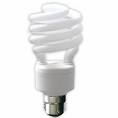
- No neuron fires faster than 1 kHz
- The total energy consumption of the brain is about 25 watts [source]
- "For all our neurocomputational sophistication and processing power, we can barely attend to more than one object at a time, and we can hardly perform two tasks at once" [source]
9 Brain Habits You Didn’t Realize You Had…(from Mindcafe.org)
Brain is certainly the most amazing part of human body. It becomes more interesting when it does not work the way you expect it should. Psychology frequently establishes our intuitions about how human mind works, but it reveals a number of surprises as well…
Although some psychology students will have heard one or two of these before, here’s a list of brain habits you probably didn’t realize you had:
1. The maximum capacity of your short-term memory is seven.
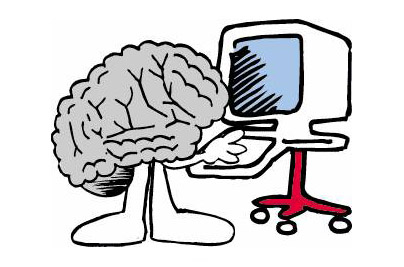
Humans have basically three forms of memory: Sensory, Long-term and Short-term. Long-term memory is just like hard-drive space. Similarly, Short-term memory functions like a very small RAM. This Short-term memory is capable to hold only about five to nine (seven is an average) items at a time.
Retrieving information longer than this will need you to either pack it together into seven units or store it in Long-term memory. Have you observed that most phone numbers have only seven digits?
2. The most visible color is Chartreuse.

Yellowish green, chartreuse is naturally placed right in the middle of the frequencies of visible light. Human eyes have receptors for green, blue and red. Being placed in the middle, chartreuse actuates the most of these receptors to fire, making it distinct and easier to spot. For the same reason, in some metropolises, firetrucks have been modified from red to a yellowish green color to make them more visible and obvious to the eye.
3. Subconscious is smarter than you.
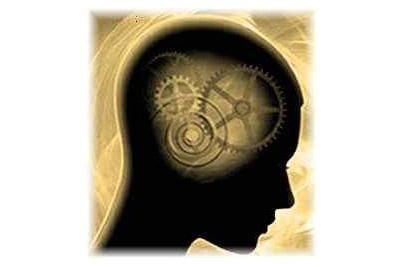
Subconscious is smarter than you. In other words, it is more powerful. In a recent study, a square was attributed to a location on a computer screen through a complex pattern. After watching it out, people began to get results better than chance of recognizing where the square would crop up next. However, when they were inquired to consciously find out the pattern, even given a few hours, nobody really did it!
4. There are two nervous systems.
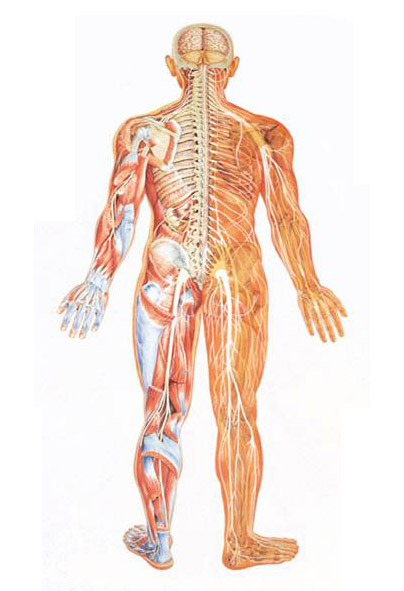
We have two sets of nervous systems. One controls excitation, while the other controls inhibition. If you hold out your hand, you might observe minor tremors. This is actually stimulated by slight, random differences in the amount each of the two systems are firing.
5. Brain is exceptionally bad at probability.

Your high-school math teacher might have told you about this fact. Here what’s interesting isn’t that your brain is bad at probability. But how? In one study, recipients were asked:
Nearly 90% of students responded that #7 was more probable than #5. This is despite the fact that to be a bank teller and in the feminist movement is entirely contained within the set of #5 (just being a bank teller). It is observable that our minds like to think more details make events more probable, not less.
6. Memory isn’t great either.

Research has revealed that people are highly probable to misremember past events. Even worse, it is quite easy to suggest a memory that never happened. Due to this fact, so-called “repressed” memories should be given a lot of consideration. It is extremely easier to suggest a memory of a situation that never encountered, then it is to recover one that actually did.
7. Depth is perceivable with one eye.

It’s not quite true that depth perception is totally the result of having two eyes. Binocular vision does help in making a three-dimensional image. Still, most of your capability to perceive depth comes from inside your brain. It has been wired to look at angles and proportions to measure distance.
If you needed two eyes to perceive depth, then most optical illusions wouldn’t work and it would be extremely difficult to gather information from two-dimensional images. Not to mention a great number of one-eyed pirates walking overboard.
8 . Long-term memory closes up during sleep.

The components of the brain that carry information to Long-term memory turn off while sleeping. For the same reason, dreams quickly fade out after you wake up. Although you may have quite a few dreams in a night, they aren’t being memorialized into Long-term memory. Normally only the fragments of a dream left in Short-term memory have a possibility to be converted after you wake up.
9. The Brain has an amazing instant playback feature.
The last form of memory, i.e. Sensory memory is actually your brain’s equivalent to an instant playback feature. Functioning for both your vision and hearing, your thalamus can resend signals a few seconds after they were originally sent.
Let’s suppose being at a party and overhearing someone call your name. Often you can recall what they said even if you were concentrating on another conversation. This is because your sensory memory re-sends the signals when it feels something important, such as your name. If you missed this form of memory, activities such as multitasking or taking notes from a speaker would not be practicable for you.
If you’re supposed to repeat something you just said because the other person wasn’t hearing, just wait for a few seconds. Often they can replay the message in their head and cause to a reaction.
7 Scientifically Proven Ways To Stimulate Brain Cell Growth/ Neurogenesis
Posted by Drew as Boost Brain Power, Brain Phenomenon
Neurogenesis - “The birth of new neurons in the brain; also referred to as the process in which neurons are created.”
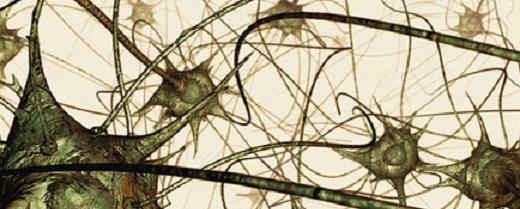 The growth of new brain cells occurs in the region of the
brain called the “hippocampus.” The ‘hippocampus’ is an area
involved with
memory, learning, and other cognitive functions. In order to
live and become part of our brain, new neurons formed in the
hippocampus-region need support from surrounding nutrients from
blood and glial cells.
The growth of new brain cells occurs in the region of the
brain called the “hippocampus.” The ‘hippocampus’ is an area
involved with
memory, learning, and other cognitive functions. In order to
live and become part of our brain, new neurons formed in the
hippocampus-region need support from surrounding nutrients from
blood and glial cells.
Most importantly, they need support from other surrounding neurons - otherwise these new brain cells will die. Though thousands of new brain cells are formed and produced via the hippocampus each and every day, many die quickly after birth. When we can keep them alive for this crucial period after birth, we are able to effectively boost the power of the human brain by adding new brain cells to the bank of existing cells.
Though neurogenesis is most active during prenatal development, there is growing evidence that certain activities also induce the growth of new brain cells [neurons] in the brain. Provided below are 7 researched and proven ways to grow new brain cells and provide a safe haven for effective neurogenesis.
1. An Exercise Regimen
Everybody knows that exercise is good for your overall health and heart, but in recent findings, powerful evidence has proven that exercise is great for your brain. Scientific experiments have discovered that mice consistently using running wheels had around 2x the amount of hippocampal neurons (brain cells) as the mice that didn’t exercise.
Another study at Colombia University found that humans who had a exercise training program were able to grow and maintain new brain cells and nerve cells in the hippocampus region of the brain. The specific area called the “dentate gyrus” is responsible for helping produce neurogenesis. Even more studies have discovered that those who exercised had 2 - 3x increases in the birth-rate of new neurons!
2. Eating Blueberries
 Eating
blueberries can trigger the growth of new brain cells? That’s
right! 19-month-old rats that were put on a blueberry enriched
diet [equal to about 1 cup per day for humans] were more skilled
at navigating through mazes than rats who weren’t fed
blueberries. Scientists know for a fact that blueberries promote
the growth of new neurons. In order to track the growth of
neurons, researchers injected dye into rats.
Eating
blueberries can trigger the growth of new brain cells? That’s
right! 19-month-old rats that were put on a blueberry enriched
diet [equal to about 1 cup per day for humans] were more skilled
at navigating through mazes than rats who weren’t fed
blueberries. Scientists know for a fact that blueberries promote
the growth of new neurons. In order to track the growth of
neurons, researchers injected dye into rats.
They saw that in the hippocampus region, new brain cells were generated. Scientists figure that “anthocyanin dye” - the dark bluish-dye found in blueberries caused the neurogenesis. The anthocyanin-dye contains chemicals that can cross the blood-brain barrier and produce the growth of neurons. There is growing evidence that the “anthocyanin dye” has the same effect on the brains of humans!
Related: For more information on brain foods, read the article Brain Foods: 50 Good Brain Foods.
3. Taking Time for Meditation
 Meditation
has always thought to have been beneficial for the brain. Recent
compelling evidence from scientific researchers at Yale,
Harvard, and Massachusetts Institute of Technology revealed that
meditation can allow us to “grow bigger brains.” Though this
isn’t the same thing as neurogenesis, meditation could very well
be an activity that boosts the birth rate of neurons.
Meditation
has always thought to have been beneficial for the brain. Recent
compelling evidence from scientific researchers at Yale,
Harvard, and Massachusetts Institute of Technology revealed that
meditation can allow us to “grow bigger brains.” Though this
isn’t the same thing as neurogenesis, meditation could very well
be an activity that boosts the birth rate of neurons.
Researchers also discovered that meditators literally had an altered-physical brain structure compared to non-meditators. Brain scanning technology [i.e. MRIs] showed that meditation boosted thickness of brain structure dealing with attention, sensory input, and memory functions. The thickening was found to be more noticeable in adults than younger individuals. It’s interesting because the same sections of our cortex that meditation thickens, tend to get thinner as we age.
Meditation is known to boost brain activity, coherency of brain waves, strengthen neural connections, and thicken gray matter. Though scientists haven’t confirmed the effects of meditation and its ability to aid neurogenesis [due to complexity issues], there is a likely possibility that it helps.
4. Antidepressant Drugs
Scientific research by the National Institute of Mental
Health has proven that antidepressants work by allowing our
brains to grow new brain cells (neurons). In a 2003 study, scientists discovered that when they blocked the
formation of new neurons in the hippocampus brain region,
behavioral effects of the antidepressant Prozac [Fluoxetine]
were diminished.
study, scientists discovered that when they blocked the
formation of new neurons in the hippocampus brain region,
behavioral effects of the antidepressant Prozac [Fluoxetine]
were diminished.
Research has already understood that depression, stress, and anxiety disorders can cause death of neurons in the brain. More studies have demonstrated that most other antidepressants on the market can and will trigger the growth of new neurons. Even more interesting is the fact that besides humans, adult animals grow new neurons when given antidepressant drugs.
Though there are many other interactions in the brain with antidepressants, their primary beneficial effect from them is derived from their ability to produce neurogenesis. Now if scientists can only figure out a way to induce the amount of neurogenesis that antidepressant medication does without creating a new drug!
5. An Enriched Environment
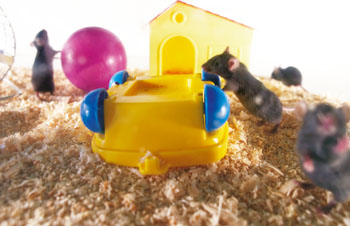 Science
has long known that living in a mentally stimulating environment
vs. an impoverished environment is far better for brain
development. Research has found that exposure to an enriched
environment enhances neurogenesis functioning and is able to
regulate emotionality.
Science
has long known that living in a mentally stimulating environment
vs. an impoverished environment is far better for brain
development. Research has found that exposure to an enriched
environment enhances neurogenesis functioning and is able to
regulate emotionality.
Scientists have found that memory-based tasks were far improved in the hippocampus region of the brain when human beings are raised in a healthy, enriched environment. One study found that mice put in stimulating environments actually had larger hippocampus regions than did those living in “standard” or “poor” laboratory conditions. They discovered a direct correlation between an enriched environment and the amount of neurons produced in the brains of mice. This had a significant effect on neurogenesis!
6. The Act of “Learning”
 Though
scientists have long known that new brain cells are able
“enhance learning” - they never thought that “learning” could
actually cause the birth of new brain cells… that is, until
recently. In recent animal studies, researchers have found that
there was a direct relationship between “learning” and the
survival rate of newly-birthed brain cells.
Though
scientists have long known that new brain cells are able
“enhance learning” - they never thought that “learning” could
actually cause the birth of new brain cells… that is, until
recently. In recent animal studies, researchers have found that
there was a direct relationship between “learning” and the
survival rate of newly-birthed brain cells.
When researchers taught certain rodents a wide-variety of cognitive tasks which involved a wide-range of brain areas - scientists found that the more the animal “learned” - the more new neurons were able to survive in the hippocampus. Scientists have made it clear that “learning” can increase the presence of new neurons in the brain.
Brain cells that are born in the hippocampus, which normally die off, are literally “rescued” by “learning” experiences. There is still plenty of research being conducted in this area and not all sources agree. However, your best bet is to keep your brain power boosted and your mind sharp. Always try to learn something new!
7. Restricting Caloric Intake
The phenomena of calorie restriction has continued to puzzle researchers. They have found that eating less food can lead to significant increases in longevity. Even when starting calorie restriction in middle age, it is able to produce around a ten to twenty percent increase in life-span. It has also been associated with hundreds of biological changes and can harbor our ability to produce new brain cells.
Restricting calorie intake has been associated with increases in neurogenesis and a better overall neuroprotective effect in the brain. Scientists have found that calorie-restricted animals nearly always stay active and healthy up until the end of their lives’. This phenomena has also been associated with a significantly lowered likelihood of developing a degenerative brain disease and can even produce new nerve cells!
————————————————————————————————————————-
For more information, view the sources:
LE Magazine: June 2002 - Calorie Restriction,
Exercise, Hormone Replacement, and Phytonutrients Fight Aging -
Age Conference - Madison, Wisconsin
Harvard University - Meditation found to increase brain size - Mental calisthenics bulk up some layers By William J. Cromie - Harvard News Office http://www.news.harvard.edu/gazette/daily/2006/01/23-meditation.html
Antidepressants Grow New Brain Cells - About.com; http://mentalhealth.about.com/cs/psychopharmacology/a/neurogenesis.htm
Sci STKE. 2003 Aug; (195):318. Antidepressants and Hippocampal Neurogenesis. Santarelli L, Saxe M, Gross A, Surget A, Battaglia F, Dulawa S, Weisstaub N, Lee J, Duman R, Arancio O, Belzung, Hen R.
The Journal of Neuroscience. 2007 Mar; 27(13): 3252-3259. Experience-Specific Functional Modification of the Dentate Gyrus through Adult Neurogenesis: A Critical Period during an Immature Stage. Tashiro A, Makino H, Gage FH.
Stanford University Research In Progress: HD & Lifestyle http://www.stanford.edu/group/hopes/rltdsci/inprogress/ae2.html
40 FACTS ABOUT SLEEP YOU PROBABLY
DIDN'T KNOW...
(OR WERE TOO TIRED TO THINK ABOUT from the
Australian National Sleep Research Project)
- Most of what we know about sleep we've learned in the past 25 years.
-The record for the longest period without sleep is 18 days, 21 hours, 40 minutes during a rocking chair marathon. The record holder reported hallucinations, paranoia, blurred vision, slurred speech and memory and concentration lapses.
- It's impossible to tell if someone is really awake without
close medical supervision. People can take cat naps with their
eyes open without even being aware of it.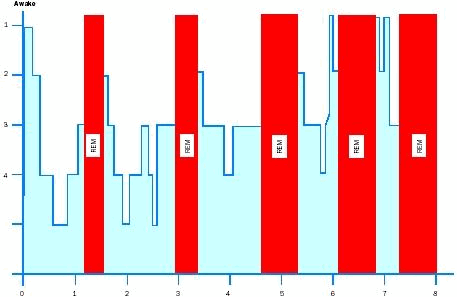
- The continuous brain recordings that led to the discovery of REM (rapid eye-movement) sleep were not done until 1953, partly because the scientists involved were concerned about wasting paper.
- REM sleep occurs in bursts totaling about 2 hours a night, usually beginning about 90 minutes after falling asleep.
- Dreams, once thought to occur only during REM sleep, also occur (but to a lesser extent) in non-REM sleep phases. It's possible there may not be a single moment of our sleep when we are actually dreamless.
- REM dreams are characterized by bizarre plots, but non-REM dreams are repetitive and thought-like, with little imagery - obsessively returning to a suspicion you left your mobile phone somewhere, for example.
- Certain types of eye movements during REM sleep correspond to specific movements in dreams, suggesting at least part of the dreaming process is analagous to watching a film.
- Some scientists believe we dream to fix experiences in long-term memory, that is, we dream about things worth remembering. Others reckon we dream about things worth forgetting - to eliminate overlapping memories that would otherwise clog up our brains.
- Dreams may not serve any purpose at all but be merely a meaningless byproduct of two evolutionary adaptations - sleep and consciousness.
- REM sleep may help developing brains mature. Premature babies have 75 per cent REM sleep, 10 per cent more than full-term bubs. Similarly, a newborn kitten puppy rat or hamster experiences only REM sleep, while a newborn guinea pig (which is much more developed at birth) has almost no REM sleep at all.
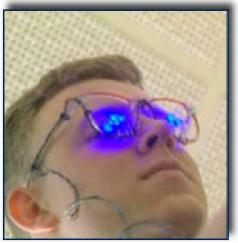
- British Ministry of Defense researchers have been able to reset soldiers' body clocks so they can go without sleep for up to 36 hrs. Tiny optical fibers embedded in special spectacles project a ring of bright white light (with a spectrum identical to a sunrise) around the edge of soldiers' retinas, fooling them into thinking they have just woken up. The system was first used on US pilots during the bombing of Kosovo.
- Scientists have not been able to explain a 1998 study showing a bright light shone on the backs of human knees can reset the brain's sleep-wake clock.
- Tiny luminous rays from a digital alarm clock can be enough to disrupt the sleep cycle even if you do not fully wake. The light turns off a "neural switch" in the brain, causing levels of a key sleep chemical to decline within minutes.
- The NRMA estimates fatigue is involved in one in 6 fatal road accidents.
- A new baby typically results in 400-750 hours lost sleep for parents in the first year.
- One of the best predictors of insomnia later in life is the development of bad habits from having sleep disturbed by young children.
 -
The 1989 Exxon Valdez oil spill off Alaska, the Challenger space
shuttle disaster and the Chernobyl nuclear accident have all
been attributed to human errors in which sleep-deprivation
played a role.
-
The 1989 Exxon Valdez oil spill off Alaska, the Challenger space
shuttle disaster and the Chernobyl nuclear accident have all
been attributed to human errors in which sleep-deprivation
played a role.
- Exposure to noise at night can suppress immune function even if the sleeper doesn’t wake. Unfamiliar noise, and noise during the first and last two hours of sleep, has the greatest disruptive effect on the sleep cycle.
- The "natural alarm clock" which
enables some people to wake up more or less when they want to is
caused by a burst of the stress hormone adrenocorticotropin.
Researchers say this reflects an unconscious anticipation of the
stress of waking up.

- Some sleeping tablets, such as barbiturates suppress REM sleep, which can be harmful over a long period.
- In insomnia following bereavement, sleeping pills can disrupt grieving.
- To fall asleep we must cool off; body temperature and the brain's sleep-wake cycle are closely linked. That's why hot summer nights can cause a restless sleep. The blood flow mechanism that transfers core body heat to the skin works best between 18 and 30 degrees. But later in life, the comfort zone shrinks to between 23 and 25 degrees - one reason why older people have more sleep disorders.

- Binge drinking will help you get to sleep but it will be a light slumber and you won't dream much.
- After five nights of partial sleep deprivation, three drinks will have the same effect on your body as six would when you've slept enough.
- Seventeen hours of sustained wakefulness leads to a decrease in performance equivalent to a blood alcohol-level of 0.05%.
- No-one knows for sure if other species dream but some do have sleep cycles similar to humans. (Experiment done by Jouvet on cats shows them acting out their dreams when they had surgical lesion in their pons [Scientific American (1967)])
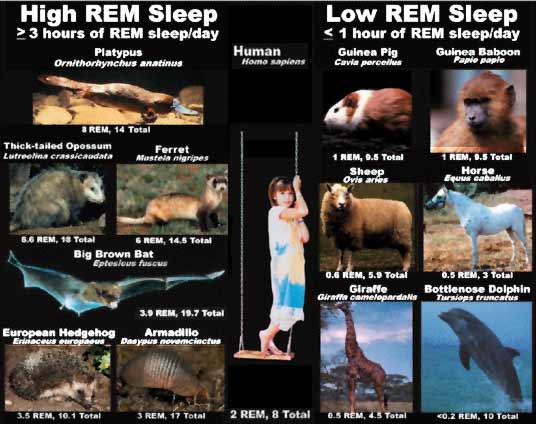
- Humans sleep on average around three hours less than other primates like chimps, rhesus monkeys, squirrel monkeys and baboons, all of whom sleep for 10 hours.
- Ducks at risk of attack by predators are able to balance the need for sleep and survival, keeping one half of the brain awake while the other slips into sleep mode.
- Elephants sleep standing up during non-REM sleep, but lie down for REM sleep.
- Snoring occurs only in non-REM sleep. (This is a false claim:
-
 Snoring
associated with sleep apnea is least likely to occur in
stages 3 & 4 (deep sleep)
Snoring
associated with sleep apnea is least likely to occur in
stages 3 & 4 (deep sleep) -
Conventional snoring is most likely to occur in stages 3 & 4 (deep sleep) & also likely to occur in stages 1 & 2
-
Conventional snoring is unlikely in REM sleep
-
Snoring associated with sleep apnea is most likely in REM sleep
-
Sleeping pills may aggravate snoring associated with sleep apnea by depressing the respiratory system and increasing light sleep at the expense of REM sleep.
-Biotele [Source])
- Ten per cent of snorers have sleep apnea, a disorder which causes sufferers to stop breathing up to 300 times a night and significantly increases the risk of suffering a heart attack or stroke.
- Anything less than five minutes to fall asleep at night means you're sleep deprived. The ideal is between 10 and 15 minutes, meaning you're still tired enough to sleep deeply, but not so exhausted you feel sleepy by day.
- Teenagers need as much sleep as small children (about 10 hrs) while those over 65 need the least of all (about six hours). For the average adult aged 25-55, eight hours is considered optimal.
- As a group, 18 to 24 year-olds deprived of sleep suffer more from impaired performance than older adults.
- Some studies suggest women need up to an hour's extra sleep a night compared to men, and not getting it may be one reason women are much more susceptible to depression than men.
- Feeling tired can feel normal
after a short time. Those deliberately deprived of sleep for
research initially noticed greatly the effects on their
alertness, mood and physical performance, but the awareness
dropped off after the first few days.

- Diaries from the pre-electric-light-globe Victorian era show adults slept nine to 10 hours a night with periods of rest changing with the seasons in line with sunrise and sunsets.
- The extra-hour of sleep received when clocks are put back at the start of daylight in Canada has been found to coincide with a fall in the number of road accidents.
- Experts say one of the most alluring sleep distractions is the 24-hour accessibility of the internet.
Top 9 Amazing Facts About Dreams by
This afternoon I had a (very rare) nap. During that nap I had a lucid dream (most of which I no longer remember). As I was waking up, I was thinking about my dream and thought that it would be a great idea to write a list about dreams for the site. So, here are the top 10 amazing facts about dreams.
9. Blind People Dream
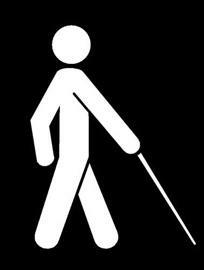
People who become blind after birth can see images in their dreams. People who are born blind do not see any images, but have dreams equally vivid involving their other senses of sound, smell, touch and emotion. It is hard for a seeing person to imagine, but the body’s need for sleep is so strong that it is able to handle virtually all physical situations to make it happen.
8. You Forget 90% of your Dreams

Within 5 minutes of waking, half of your dream if forgotten. Within 10, 90% is gone. The famous poet, Samuel Taylor Coleridge, woke one morning having had a fantastic dream (likely opium induced) - he put pen to paper and began to describe his “vision in a dream” in what has become one of English’s most famous poems: Kubla Khan. Part way through (54 lines in fact) he was interrupted by a “Person from Porlock“. Coleridge returned to his poem but could not remember the rest of his dream. The poem was never completed.
In Xanadu did Kubla Khan
A stately pleasure-dome decree:
Where Alph, the sacred river, ran
Through caverns measureless to man
Down to a sunless sea.
[…]
Curiously, Robert Louis Stevenson came up with the story of Doctor Jeckyll and Mr. Hyde whilst he was dreaming. Wikipedia has more on that here. Mary Shelley’s Frankenstein was also the brainchild of a dream.
7. Everybody Dreams

Every human being dreams (except in cases of extreme psychological disorder) but men and women have different dreams and different physical reactions. Men tend to dream more about other men, while women tend to dream equally about men and women. In addition, both men and women experience sexually related physical reactions to their dreams regardless of whether the dream is sexual in nature; males experience erections and females experience increased vaginal blood flow.
6. Dreams Prevent Psychosis

In a recent sleep study, students who were awakened at the beginning of each dream, but still allowed their 8 hours of sleep, all experienced difficulty in concentration, irritability, hallucinations, and signs of psychosis after only 3 days. When finally allowed their REM sleep the student’s brains made up for lost time by greatly increasing the percentage of sleep spent in the REM stage. [Source]
5. Not Everyone Dreams in Color

A full 12% of sighted people dream exclusively in black and white. The remaining number dream in full color. People also tend to have common themes in dreams, which are situations relating to school, being chased, running slowly/in place, sexual experiences, falling, arriving too late, a person now alive being dead, teeth falling out, flying, failing an examination, or a car accident. It is unknown whether the impact of a dream relating to violence or death is more emotionally charged for a person who dreams in color than one who dreams in black and white. [Source]
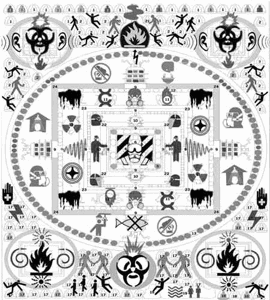
4. Dreams are not about what they are about
If you dream about some particular subject it is not often that the dream is about that. Dreams speak in a deeply symbolic language. The unconscious mind tries to compare your dream to something else, which is similar. Its like writing a poem and saying that a group of ants were like machines that never stop. But you would never compare something to itself, for example: “That beautiful sunset was like a beautiful sunset”. So whatever symbol your dream picks on it is most unlikely to be a symbol for itself.
3. Quitters have more vivid dreams

People who have smoked cigarettes for a long time who stop, have reported much more vivid dreams than they would normally experience. Additionally, according to the Journal of Abnormal Psychology: “Among 293 smokers abstinent for between 1 and 4 weeks, 33% reported having at least 1 dream about smoking. In most dreams, subjects caught themselves smoking and felt strong negative emotions, such as panic and guilt. Dreams about smoking were the result of tobacco withdrawal, as 97% of subjects did not have them while smoking, and their occurrence was significantly related to the duration of abstinence. They were rated as more vivid than the usual dreams and were as common as most major tobacco withdrawal symptoms.” [Source]
2. External Stimuli Invade our Dreams

This is called Dream Incorporation and it is the experience that most of us have had where a sound from reality is heard in our dream and incorporated in some way. A similar (though less external) example would be when you are physically thirsty and your mind incorporates that feeling in to your dream. My own experience of this includes repeatedly drinking a large glass of water in the dream which satisfies me, only to find the thirst returning shortly after - this thirst… drink… thirst… loop often recurs until I wake up and have a real drink. The famous painting above (Dream Caused by the Flight of a Bee around a Pomegranate a Second Before Awakening) by Salvador Dali, depicts this concept.
1. You are paralyzed while you sleep
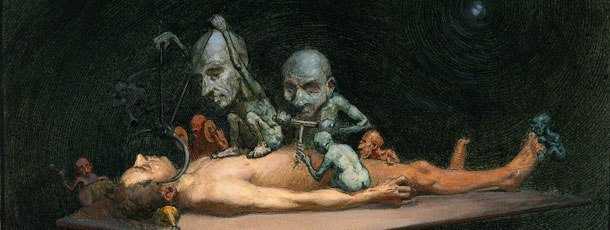
Believe it or not, your body is virtually paralyzed during your sleep - most likely to prevent your body from acting out aspects of your dreams. According to the Wikipedia article on dreaming, “Glands begin to secrete a hormone that helps induce sleep and neurons send signals to the spinal cord which cause the body to relax and later become essentially paralyzed.”
Bonus: Extra Facts
1. Toddlers do not dream about themselves until around the
age of 3. From the same age, children typically have many
more nightmares than adults do until age 7 or 8.
2. If you are awakened out of REM (Rapid Eye Movement)
sleep, you are more likely to remember your dream in a more
vivid way than you would if you woke from a full night
sleep.